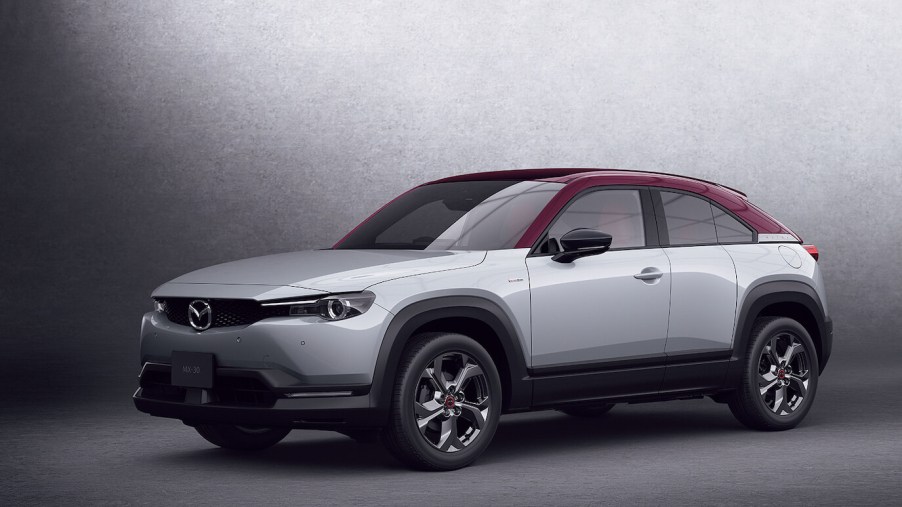
How Bad of a Flop Was the Mazda MX-30?
Since its debut in 2020, the Mazda MX-30 has been widely panned as a subpar electric SUV, and it appears those predictions have come to fruition. The MX-30‘s shortcomings were immediately apparent upon release – with its short range of just 124 miles on a single charge and few features compared to competitors. Many critics dismissed it as a throwaway model from the company so that they could claim to have an electric SUV in their lineup. But just how low of a flop was it?
How did the Mazda MX-30 perform in sales?
The numbers paint a bleak picture for the MX-30. According to GoodCarBadCar, Mazda North American Operations reported that its vehicle sales in the United States doubled from the same month a year prior, reaching 29,786 units. However, only 16 MX-30s were sold during that same period – a 30 percent decrease year-over-year. That amounts to just 0.1 percent of the company’s total sales volume in the United States.
Moreover, during the second quarter of 2023, Mazda reported selling only 51 electric cars in California – 35 percent less than a year ago. And in the first half of 2023, only 66 MX-30s were sold, a 79 percent drop since the same time in 2020. In total, only 571 units of the model have been sold over almost two years.
While rivals like Tesla have seen huge success in the EV market, Mazda could not realize similar results with the MX-30. This could be attributed to its high price tag of $34,110 (plus a $1,275 destination charge) and short range compared to other models on the market – like the Tesla Model 3 RWD or Chevrolet Bolt EV/Bolt EUV.
The discontinuation of the Mazda MX-30: what’s next?
According to Car and Driver, Mazda recently announced that it would discontinue the MX-30 in the US and refocus its electric vehicle efforts to larger platform PHEVs. The Mazda CX-90 Plug-in Hybrid is scheduled to launch soon and will be joined by a new CX-70 in the near future.
Fortunately, the MX-30 will still be available in other countries where it can be purchased as either an EV or a plug-in hybrid. The plug-in version (the R-EV) also features a range extender powered by Mazda’s iconic rotary engine – making it the first rotary-powered Mazda since the RX-8.
Though the MX-30 had flaws, it became Mazda’s first fully electric vehicle in the U.S. Ultimately, its discontinuation signals a shift in the company’s strategy, and it will be interesting to see what Mazda comes up with next. One thing is certain: the MX-30 was a flop in sales, and its exit from the US market was well deserved.
Overview of the 2023 Mazda MX-30
The Mazda MX-30 features a 146 hp electric motor and a 35.5 kWh battery, with a range of only 100 miles on a single charge. Along with its lackluster range, the MX-30 acceleration isn’t at its best either, taking nearly 8.5 seconds to reach 60 mph – slower than most competitors on the market.
Furthermore, the MX-30 has its fair share of design flaws, including limited interior cargo space and rear-hinged doors that don’t open far enough, making it difficult to get in and out of the vehicle.
The MX-30’s cabin is equipped with natural materials such as cork and sustainable fabric. It also features a 7.0-inch digital instrument panel, an 8.8-inch multimedia display, and an infotainment system with Apple CarPlay, Android Auto, and Bluetooth connectivity.



